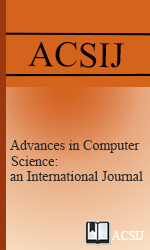Social Impact on Android Applications using Decision Tree
Abstract
Mobile phones have evolved very rapidly from black and white to smart phones. Google has launched Android operating system (OS), based on Linux targeting the smart phones. After this, people became addicted to these smart phones due to the facilities provided by these phones. But the security leaks possess in Android are the big hurdle to use it in a secured way. The Android operating system is mostly used because it is an Open Source/freeware and most of its applications are also freely available on different online applications stores. To install any application, we must accept the terms and conditions regarding the access to multiple part of device and personal information, otherwise unable to install these free or paid applications. The main problem is that when we allow the access to multiple parts of our device and our personal information, the inherited security leaks become more vulnerable to threat. A very simple and handy solution is that we only install the applications that are positively reviewed by other users who already installed and are still using these applications. We implement the Decision Tree, a machine learning technique, to analyze these positively reviewed application and make a recommendation whether to install them in the device or not.
Keywords
Full Text:
PDFReferences
A. AH and R. M, "Device-aware desktop web page transformation for rendering on handhelds,"Personal and Ubiquitous Computing, vol. 9, no. 6, pp. 368-380, 2005.
J. A. Chow GW, "A Framework for Anomaly Detection in OKL4-Linux Based Smartphones," in 6th Australian Information Security Management Conference, 2008.
J. DiMarzio, Android A Programmers Guide, McGraw-Hill Osborne Media, 2008.
http://developer.android.com/about/index.html, http://developer.android.com. [Online]. [Accessed December 2014].
W. Enck , O. Machigar and D. Patrick, "Understanding Android Security," IEEE security & privacy, vol. 7, no. 1, pp. 50-57, 2009.
A. Shanker and L. Somya , "Android porting concepts," in IEEE International Conference on Electronics Computer Technology (ICECT), 2011.
"http://developer.android.com/guide/basics/whatis- android.html," Google, [Online]. Available: http://developer.android.com. [Accessed 8 June 2014].
Gartner, "Gartner Says Worldwide Mobile Phone Sales Declined 8.6 Per Cent and Smartphones Grew 12.7 Per Cent in First Quarter of 2009," Gartner, Egham, UK, 2014.
B. Sun, Z. Chen, R. Wang, F. Yu and V. Leung, "Towards adaptive anomaly detection in cellular mobile networks," in IEEE Consumer Communications and Networking Conference, 2006.
B. Sun, Y. Xiao and K. Wu, "Intrusion Detection in Cellular Mobile Networks," in Wireless Mobile Network Security, Springer, 2007, pp. 183-210.
BORTNIK and SEBASTIÁN, http://www.welivesecurity.com/2011/12/20/2012-predictions-more-mobile-malware-and-localizedattacks/, ESET, 20 December 2011. [Online]. [Accessed 14 October 2014].
A. Majumdar, "http://tech.firstpost.com/newsanalysis/ us-warns-government-workers-aboutandroid- malware-threats-104558.html," 27 August 2013. [Online]. [Accessed 11 December 2014].
M. La Polla, F. Martinelli and D. Sgandurra, "A Survey on Security for Mobile Devices," IEEE COMMUNICATIONS SURVEYS & TUTORIALS, vol. 15, no. 1, pp. 446-471, 2013.
A. P. Felt, E. Chin, S. Hanna, D. Song and D. Wagner, "Android permissions demystified," in ACM conference on Computer and communications security, 2011.
D. Damopoulos, S. A. Menesidou, G. Kambourakis, M. Papadaki, N. Clarke and S. Gritzalis, "Evaluation of anomaly‐based IDS for mobile devices using machine learning
classifiers," Security and Communication Networks, vol. 5, no. 1, pp. 3-14, 2012.
Y. Zhang, W. Lee and Y. A. Huang, "Intrusion detection techniques for mobile wireless networks," Wireless Networks, vol. 9, no. 5, pp. 545-556, 2003.
M. Miettinen, P. Halonen and K. Hatonen, "Hostbased
intrusion detection for advanced mobile devices," in IEEE conference on Advanced Information Networking and Applications, 2006.
A. Shabtai, U. Kanonov and Y. Elovici, "Intrusion detection for mobile devices using the knowledgebased, temporal abstraction method," Journal of Systems and Software, vol. 83, no. 8, pp. 1524- 1537, 2010.
A. Girardello and F. Michahelles, "Explicit and Implicit Ratings for Mobile Applications," GI Jahrestagung, vol. 1, pp. 606-612, 2010.
A. Girardello and F. Michahelles, "AppAware: Which mobile applications are hot?," in ACMIinternational conference on Human computer interaction with mobile devices and services, 2010.
K. N. and H. C. C. , "Input feature selection for classification problem," IEEE Trans on Neural Networks, vol. 13, no. 01, pp. 143-159, 2002.
P. D. Turney, "Thumbs up or thumbs down?: semantic orientation applied to unsupervised classification of reviews," in Association for Computational Linguistics, 2002.
T. M. Mitchell, Machine Learning, New York: McGraw-Hill Comp., Inc., 1997.
A. Kalpesh, G. Aditya, D. Amiraj, J. Rohit and H. Vipul, "Predicting Students Performance Using ID3 and C4.5 classification Algorithms," International journal Data mining and knowledge management process, vol. 3, no. 5, 2013.
 Advances in Computer Science : an International Journal
Advances in Computer Science : an International Journal







